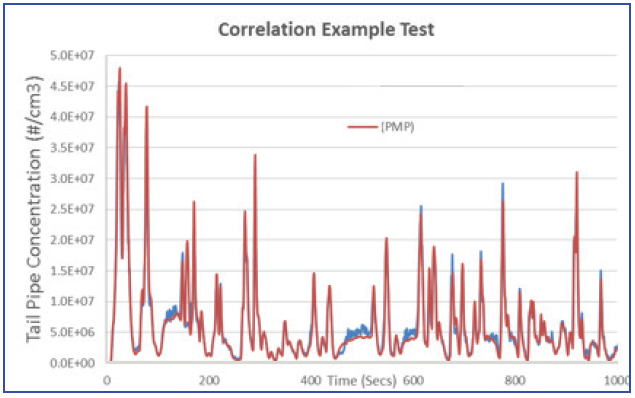The major component of the low-cost Sensors APB® is a mixing-type Condensation Particle Counter (CPC) for the measurement of particle number concentrations in the size range from 10 to 200 nm.
The layout of the APB® is shown below:
Note that this OEM module can be easily integrated into third party PTI-based measurement systems. Unlike, full-flow CPCs in which the particle laden air passes through a heated wick surrounded by the working fluid (normally Butanol or Isopropyl alcohol) to become saturated, in mixing-type CPCs, the aerosol flow is kept separate from the source of saturated air and mixed prior to being transported through the condenser. In the condenser (for both full-flow and mixing type CPCs), the super-saturated vapor condenses on the particles and grows them to about 5 -10 μm droplets. These drops are then focused through a nozzle, passed through a laser beam, and are counted by light scattering pulse detection electronics.
The APB® is configured to operate with >99% isopropyl alcohol (IPA). The APB® also includes an internal peristaltic pump for the easy filling / management of the CPC saturator block (reservoir capacity 5 ml) from an external IPA tank that is built into the APA. Under normal operation, the fluid consumption rate is ca. 2-3 ml per hour and thus the system can operate over an extended period without the user needing to fill the tank.
The minimum particle size, which can be detected by a CPC is determined by the super-saturation achieved, which in turn depends on the temperature difference between saturator and condenser. In practice, not all particles experience the same super-saturation, thus the efficiency of the counter gradually decreases at smaller sizes, and the lower cut-off size is defined as the size at which 50% of particles (d50), present are counted. Typically, this particle size is around 15 nm. Since this size is smaller than the “automotive – PMP” criteria, diffusion screens upstream of the CPC are used to increase the system response to the currently established criteria of 23 nm.
Sensors’ CPC automatically adjusts the reported count at high particle concentrations (when the probability of more than one droplet is in the laser measurement zone – the adjustment is termed the “coincidence correction factor”). This correction allows the CPC to measure up to 30,000 #/cm3 with excellent linearity (R2 > 0.99) and a maximum coincidence correction factor of less than 15%.
For robustness and ease of use, a mixing-type CPC was chosen since it offers a number of key and important benefits:
- No performance degradation associated with the saturator/wick; in full flow CPCs’ the wick becomes contaminated with particles which results in lower super-saturation levels over time.
- The saturator can be mechanically decoupled from the saturator / measurement optics improving robustness and in particular significantly less sensitively to optics contamination (working fluid) caused by vibration, orientation etc.
- The CPC can be configured to operate with a < 5 sec t10-t90 rise time.
- CPCs operational deterioration factors are very well understood and are essentially zero for a well-designed CPC and this is reflected in ISO 27891:2015 calibration methodology and the yearly interval between calibrations. This is in contrast to diffusion-based PN measurement systems (DCs), which are typically prone to deteriorate during normal operation from a variety of sources, which include contamination of the trap and corona source. Moreover, in the typical size range of interest, CPCs have no particle size dependency whereas DCs have both a significant size dependency and can exhibit erratic results when the particles are pre-charged (for example in SCR after treatment systems).
The APB® includes a dedicated micro-processor for the control of the CPC (with RS232 interface for direct integration). In addition, the APB® can be fitted with a low-cost suite of a micro-computer running Linux based software for data storage, a wireless communication (Wi-Fi), a Bluetooth communication to an OBD adapter, and a HTML driven graphical user interface allowing the system to stand alone for the user’s application.
APB® test data compares concentrations of 8 test vehicles
APA correlation to reference PMP
